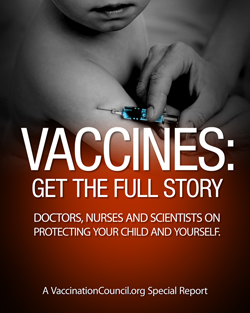I
do not think you are insane. That is a nightmare of a way to start your life as
a mother. Preterm babies are so hard to heal from. There are so many reasons
that our bodies decide not to continue a pregnancy, it is very hard to
pinpoint. With the level of technology we currently have available, doctors are
certainly able to give a better prognosis to these babies that would have
otherwise been considered a late term miscarriage in earlier times. Besides the
fact you have had this experience, your fears are normal and you are not crazy!
Some
things to be aware of. I know you love statistics so I will give you some
numbers.
Preterm
Premature Rupture of Membranes (PPROM)is the leading cause of preterm
labor and accounts for 88% of babies that die when born (before 37 weeks
gestation)prematurely. Premature Rupture of Membranes happens in about 3%
of all pregnancies, around 150,000 annually in the US. (from my research paper
on cesarean birth rate)
In
Midwifery Today’s last publication, they had a story about premature births and
claimed that the majority of these are caused by uterine infections. They also
said that dental hygiene is incredibly important to prevent uterine infections. Pretty interesting huh?
I
am going to take a wild guess here, and this is just a hunch, I am by no means
qualified to tell you this is fact but being as constipated as you describe can
lead to an overload of toxins in your body and probably had a significant role
in your preterm birth. The first step I would take, if I was your midwife, would
be to get you on a diet that would help to reduce that. This may include you
going outside of your comfort zone to eat things you may not be entirely happy
about, at least try it, and if you cannot fathom keeping up with it, seeking
alternatives that would have the same effect. Here are some choices…
Besides
what the American Pregnancy Association recommends which is the first steps to
take
my
favorite herbologist, Susun Weed, has some suggestions here
that are easy to implement with the right motivation, certainly preventing
preterm labor and avoiding the nightmare scenario you endured before is enough
motivation to give it a try. You can obtain these herbs at your local herb or Tea Shop or order online. Not only do they have
medicinal qualities, they are nutrient rich and better absorbed than prenatal
vitamins in most cases. You can lose the iron supplements and replace it with
the herbs that also contain calcium and vit A, C and B’s that are vital to your
health while pregnant.
Vit
C is another supplement that can drastically reduce your risk of preterm
premature rupture of membranes. This study reports “Daily supplementation with 100 mg vitamin C after 20 wk of gestation
effectively lessens the incidence of PROM.”
In this article by Gail Hart, who is a midwife and
educator who travels all over the world with Midwifery Today as an expert
speaker, whom I have had the absolute pleasure of meeting and conversing with,
she goes over some of the issues that cause preterm labor and ways to avoid
them. This woman has practiced natural authentic midwifery for more than 30 years and
is a jewel to our community. Please read this and let me know if you need any
clarification on anything.
Now,
if you are going to go the high risk route with a doctor, and you tell them
about supplementing with herbs and vitamins, they are possibly going to tell
you there is no evidence to prove any of this works. They are mistaken. The
evidence is in the years and years of these plants being used and producing
healthy pregnancies and babies and are not reported or scientifically studied
because it would cost loads of money and drug companies can’t patent the herbs
the way they do medicines so it is a money issue and not a science issue. I
honestly understand why you would want the support of a specialist OBGYN with
your past experience. I am sure the tests and reassurances you can gain from
them will help your confidence in the pregnancy and your ability to learn to
trust your body. I hope I can give you the tools you need to advocate for
yourself and take charge of your care and seek to understand ways in which you
can maintain your health without unneeded interventions that might disrupt the
safety of your pregnancy.
 The
easiest way to insure yours and your baby’s health is to make changes to your
diet. I have an abundance of raspberry leaf and nettle and can bring you
some to get started right away if you want. It can’t hurt. I sweeten
the infusions with fruit juice like cranberry or pomegranate. You can brew half
a gallon of this every other day and keep it in a water bottle that you can sip
on throughout the day to help with your morning sickness. I also brew kombucha
and can supply you with kombucha tea or a SCOBY so you can brew your own. This
will also aid in digestion and prevent constipation and balance your intestinal
and vaginal flora. Here is info on Kombucha during pregnancy.
Like the article says, if you haven’t been a regular drinker of the kombucha,
start with just a small cup a day, you may never need to drink more than that,
but if you enjoy it, you may want to gradually increase it or even add it to
your infusions… I love kombucha, but I have acquired the taste for it and
noticed the benefits right away!
The
easiest way to insure yours and your baby’s health is to make changes to your
diet. I have an abundance of raspberry leaf and nettle and can bring you
some to get started right away if you want. It can’t hurt. I sweeten
the infusions with fruit juice like cranberry or pomegranate. You can brew half
a gallon of this every other day and keep it in a water bottle that you can sip
on throughout the day to help with your morning sickness. I also brew kombucha
and can supply you with kombucha tea or a SCOBY so you can brew your own. This
will also aid in digestion and prevent constipation and balance your intestinal
and vaginal flora. Here is info on Kombucha during pregnancy.
Like the article says, if you haven’t been a regular drinker of the kombucha,
start with just a small cup a day, you may never need to drink more than that,
but if you enjoy it, you may want to gradually increase it or even add it to
your infusions… I love kombucha, but I have acquired the taste for it and
noticed the benefits right away!
OK,
that is a lot of reading for you to get started. I hope it helps ease some of
your fears by putting some choices in your hands to work with. If it was me,
the first thing I would try is the raspberry leaf infusions with some nettle
and a small cup of kombucha to help with the morning sickness and prevent
constipation. If you don’t have much of an appetite, these are the bare minimum
things I would want in my body to nourish the cells and the baby’s growth.



























